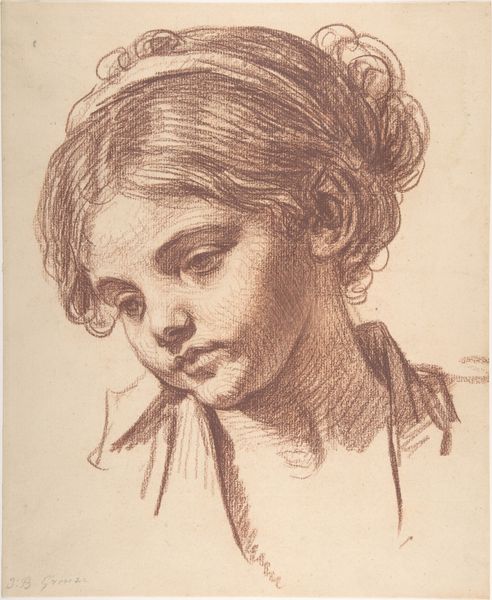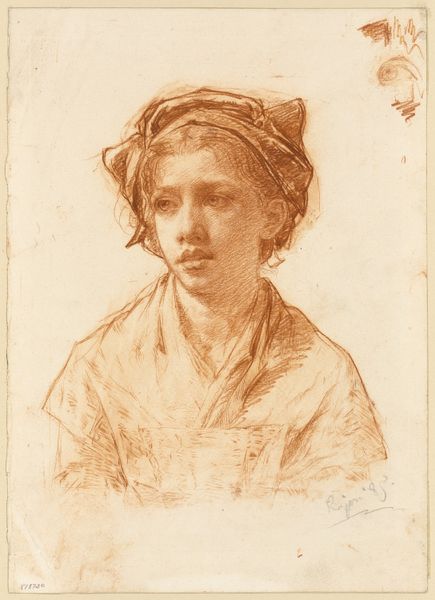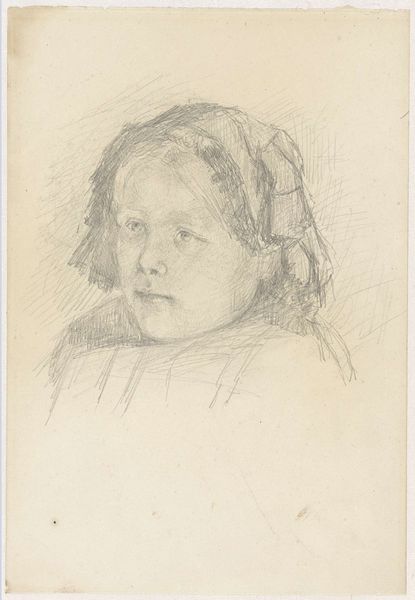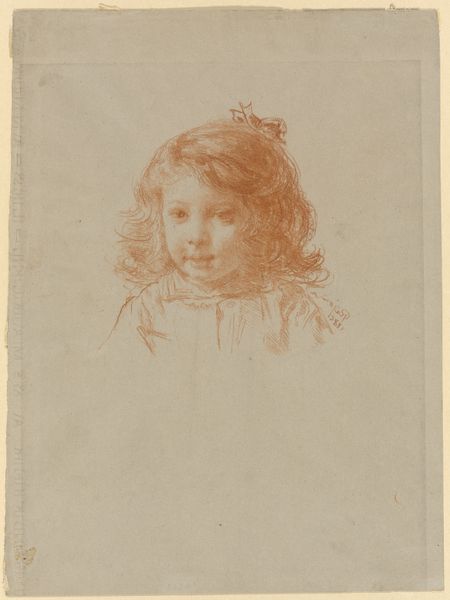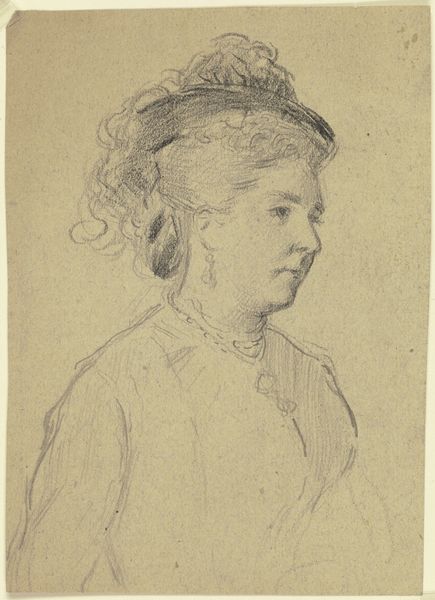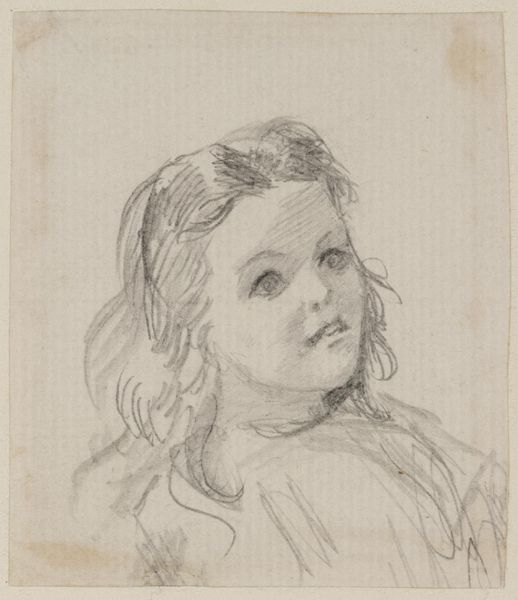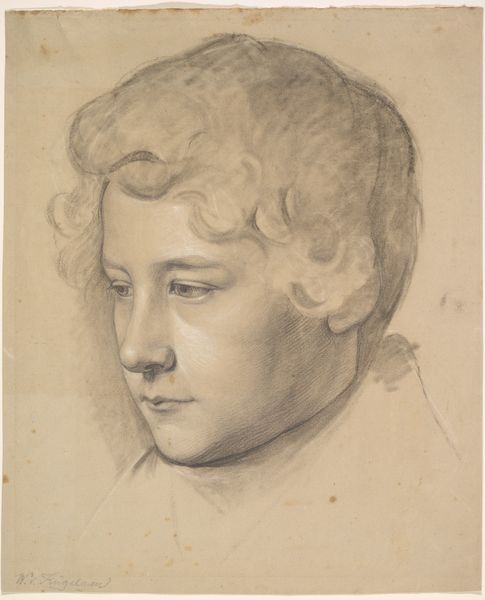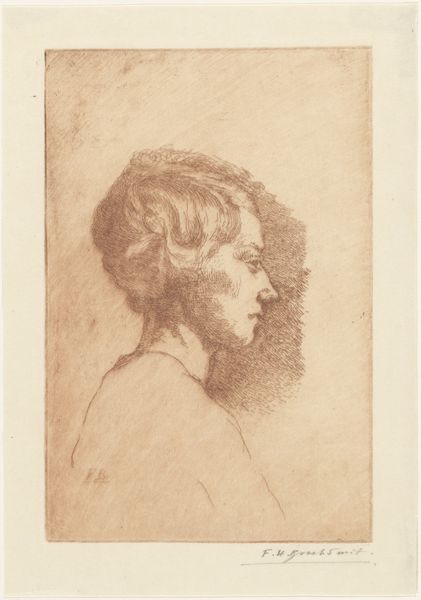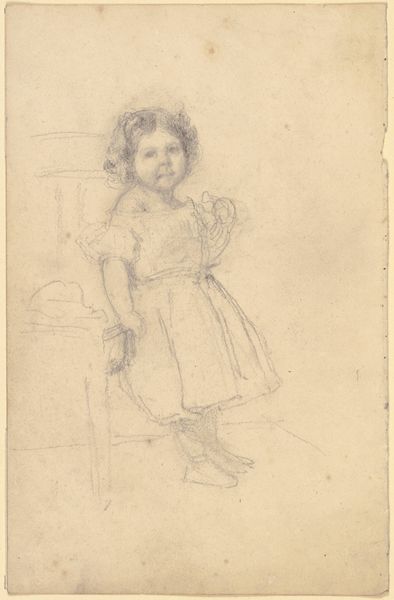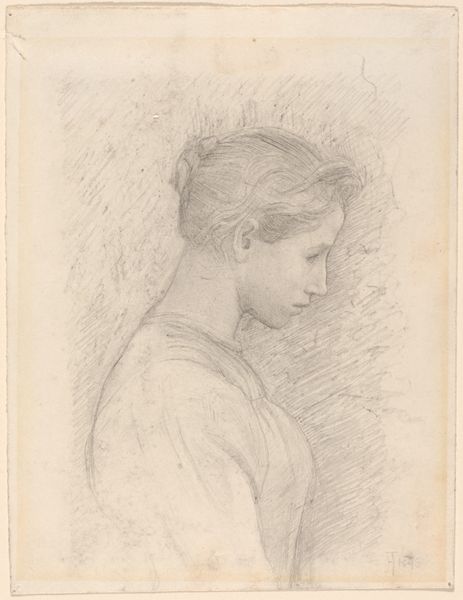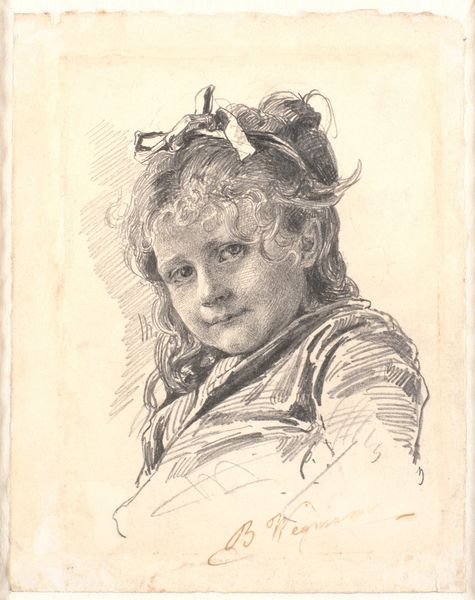
drawing, red-chalk, dry-media
#
portrait
#
drawing
#
red-chalk
#
figuration
#
dry-media
#
romanticism
#
portrait drawing
Dimensions: 10 3/4 x 9 1/2 in. (27.31 x 24.13 cm) (image)
Copyright: Public Domain
Curator: Welcome. Here we have Paul Adolphe Rajon's, "Study of a Woman's Head," created around the 19th century. It's a red-chalk drawing, now residing here at the Minneapolis Institute of Art. Editor: There's a lovely melancholy in that gaze. She looks downwards, but there is an overall simplicity in form and medium—that speaks volumes despite the pose, you know? The medium and minimal treatment only intensify the feeling, actually. Curator: Yes, the economy of line is quite striking. Rajon masterfully employs the red-chalk to create variations in tone and texture. Observe how the hatching and cross-hatching delineate the contours of her face and suggest the fall of light. The woman's head is centrally placed, her gaze angled slightly, which pulls one's eyes right into the center. Editor: I think about these sorts of portrait studies in the context of 19th century academic art. These served as ways for artists to not only perfect human form but were studies that would have been used to paint very specific tropes like grief, acceptance, innocence etc. In the wider sphere, this woman may embody a set of specific moral traits associated with ideal femininity for a consumer market. Curator: I agree entirely. Consider the softness achieved with the chalk—there’s almost an sfumato effect to her features. Notice also how the looser strokes create a sense of movement, a dynamic tension between finish and incompleteness, perhaps even suggesting a romantic longing that characterized a large portion of works during the same period. The bareness of the figure emerging from the similarly hued backdrop does give way to thoughts about form and medium. Editor: That restrained approach speaks to a specific demand. Images, as art and popular visual medium, shaped ideals during an industrial era marked by societal reorganization. Rajon here makes an engagement of intimate observation. It encourages people to not just gaze at the sitter as just representation but actively decode meaning from the texture of those details, of a very particular ideal promoted by art. Curator: It certainly exemplifies the period’s concerns and tastes in representing the subject through both intimate, private study and public virtue. Editor: Indeed. Looking at Rajon's “Study of a Woman’s Head" allows a deeper examination of aesthetic approach, while prompting questions about its purpose. Curator: For me, it offers insights into how technical elements communicate themes of human sentiment through form and medium.
Comments
No comments
Be the first to comment and join the conversation on the ultimate creative platform.
